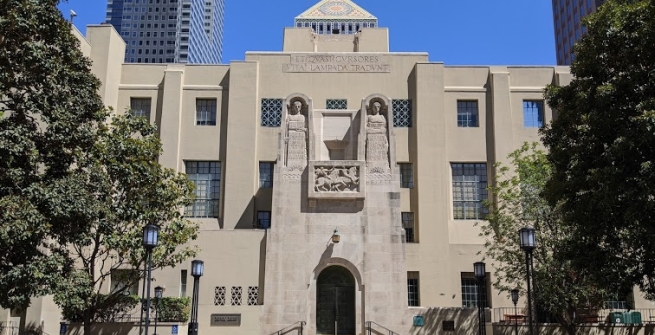A few words come to mind about my practice as an Art Librarian with roots in both academic and studio experiences—scribe, space, and light. I work in the Los Angeles Central Library. Every day Bertram Grosvenor Goodhue’s library prepares me to engage with many people in a manner that draws an understanding of their inquiries and a vision for their journeys forward.
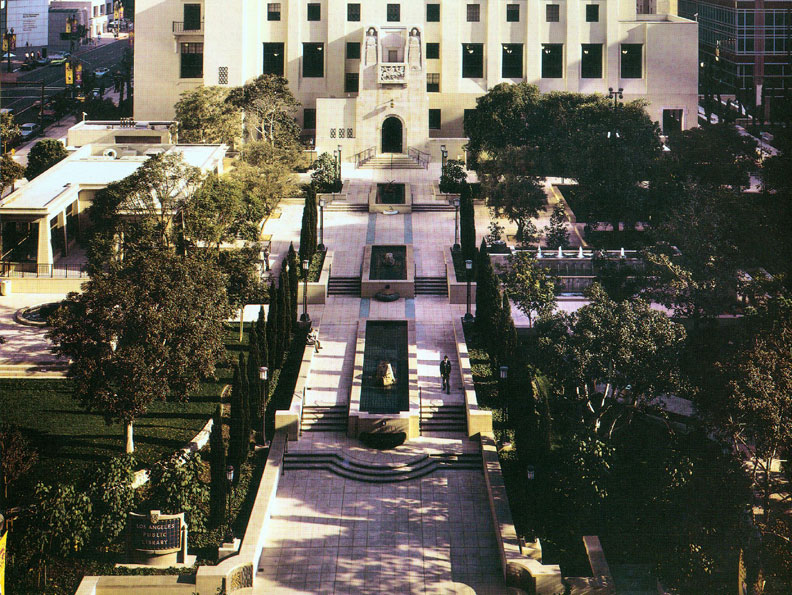
In the morning light I enter the garden designed by landscape architect Lawrence Halprin and his collaborators with its principal feature, an axis metaphorically representing the spine of a book. As a scribe, I see the pictorial representations of language from the earliest glyphs to the references of writers, mathematicians, and philosophers on the stair risers of steps leading to terraces that run 200 feet from Flower Street to the library’s west entrance.
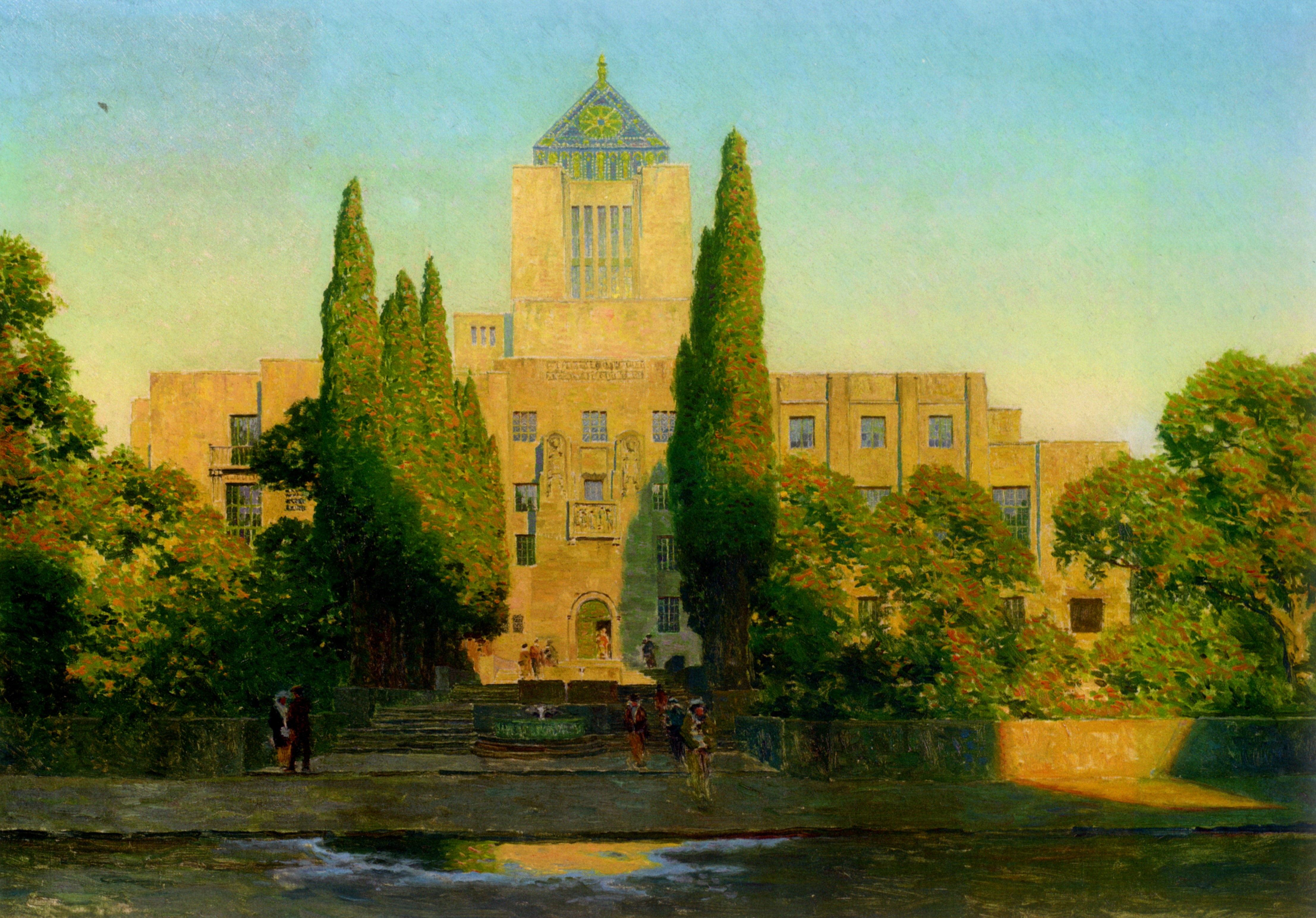
Here the reflecting pools, the wells, and their fountains bearing the words “bright”, “lucid”, and “clear” and the extended north/south axis afford seating on low walls shaded by tree plantings of Cypress, Camellias, and Ironwood that remind me of a 1924 sketch from Goodhue’s office of the imagined west garden; but aside from those elements mentioned above, the Halprin landscape design remains a blended late-twentieth-century garden that mercifully replaced the parking lot that preceded it.
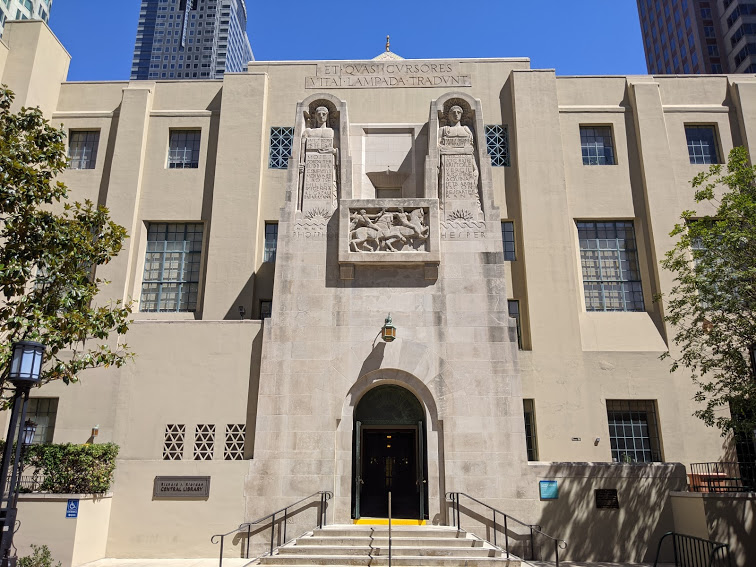
From Flower Street the view of Phosphor and Hesper in high relief emerges on the west façade of the library, as Goodhue intended, and above the building proper, the tower rises with its colorful tiles and torch, the iconographic ‘light of learning’ sculpted by Lee Oskar Lawrie.
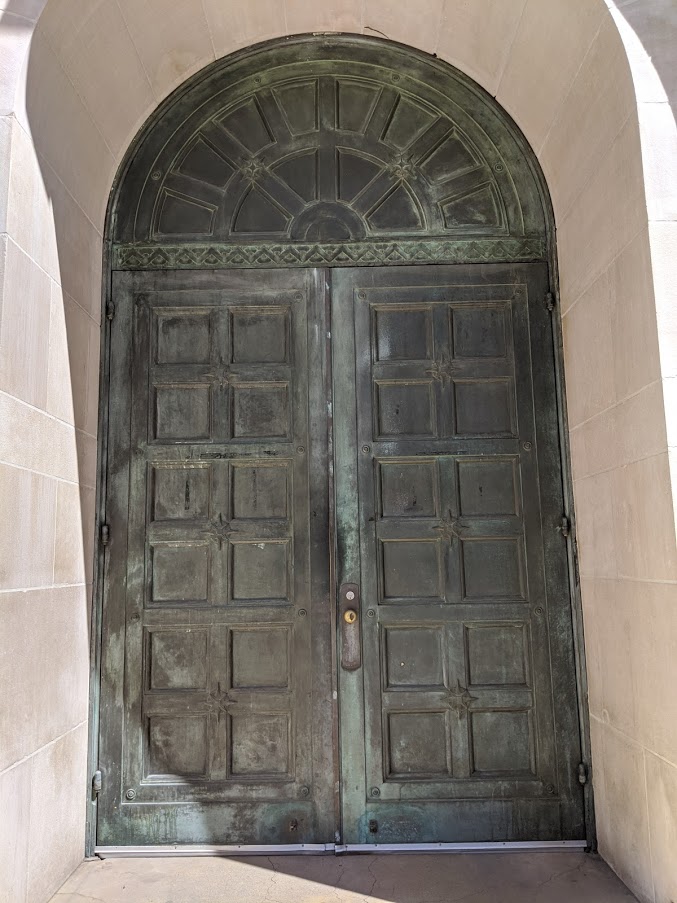
The bronze doors set in the entrance open against the limestone walls provide a visual respite before entering the worlds within. Whether entering from the west or the north doorways, the vestibule is still. Then after an explosion of visual activity, an elevator transports me to the rotunda with the morning light streaming through the four clerestory windows. From the marble floor, the painted concrete walls meet the Cornwall murals, and above them, the rotunda’s arches prepare the eye to take in the domed ceiling decorated by Julian Ellsworth Garnsey with its intricate stenciled patterns and a painted sunburst from which Lawrie’s chandelier hangs.
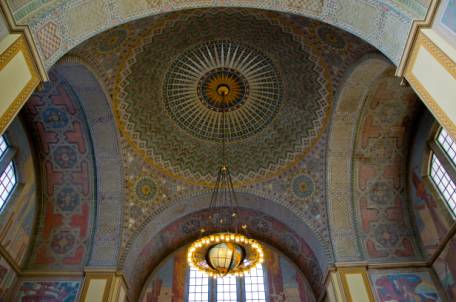
From the center of this universe I begin the measured walk across the rotunda, through the hallway to architect Norman Pfeiffer’s new wing. Therman Statom’s tulip catches the light in the atrium and waves hello as I pass into the Art Department. My excursion has prepared me to lead others in their explorations.
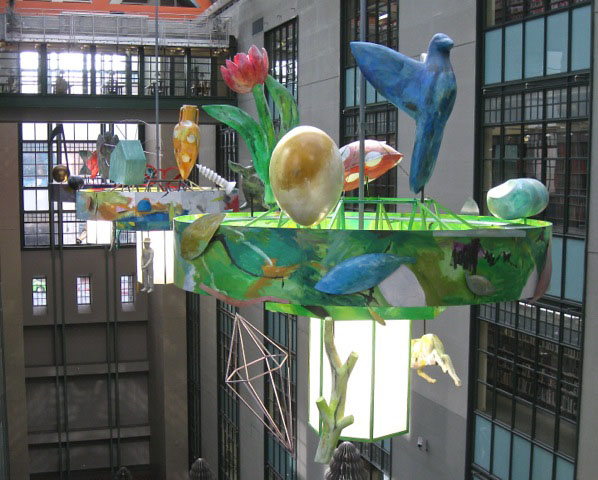
In the course of the day an elderly musician will come by to look through Whitburn’s record price guides; we will exchange anecdotes about Mississippi John Hurt and his unique fingerpicking style that I first heard at the Newport Folk Festival in 1963.
Next a student will ask about the First Transcontinental Railroad because she wants to create an artwork in remembrance of her great, great grandfather who traveled from Guangdong, a province in southeast China, to carve out of the landscape a pathway for the first coast to coast railroad. Her journey will take her to four subject departments to explore 19th-century artworks from Guangdong, read the history of the first cross-country railroad, study 19th century maps of the United States and pore over books with contemporary Chinese sculpture. Then a digital visit to U.C. Berkeley’s Bancroft Library with its collections of photographs of the TCR will open new possibilities for her. Later she will return with sketches that emerged from the time spent in the spaces that Goodhue and his collaborator poet and philosopher Hartley Burr Alexander imagined.
When two people ask about protest works by African American artists, we begin a dialog that leads to resources representing graphic art from painters, printmakers, and interdisciplinary artists on both sides of the continent. We delve into booklists that identify titles with many artists and monographs highlighting exhibitions of the works of individual artists. They settle on stacks of books with L.A. artists Betye Saar, Charles White, John Outterbridge, and Sanford Biggers, an L.A. native working in New York. Then collect titles of NYC artists Romare Bearden, Jean-Michel Basquiat, Faith Ringgold, and David Hammons, known for his work in NYC and L.A. They pour over collective titles like, Soul of a Nation: Art in the Age of Black Power, Now Dig This!: Art and Black Los Angeles, We Wanted a Revolution: Black Radical Women: 1965-85: a Sourcebook, and Black Refractions: Highlights from the Studio Museum in Harlem, promising to return soon.
Eventually I move on to my presentation of a virtual drawing workshop where participants who have received a resource packet in advance examine books with images of the marks made by humans from the earliest cave drawings to present-day street art with Leonardo sandwiched in there somewhere. They practice new skills, perhaps not unlike Goodhue, extending their vocabularies of marks and expanding their means of expression, of thinking, of coming to know the world.
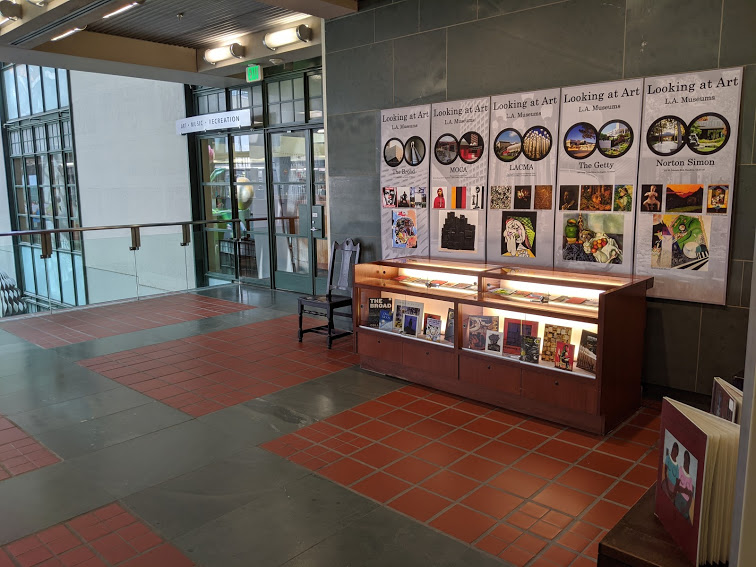
For nearly a century, the Goodhue library continues to inspire.
Recommended Reading
Note: Eileen King’s modified reflections were first given on a virtual panel discussion with authors Stephen Gee, and Kenneth Breisch in 2020.
